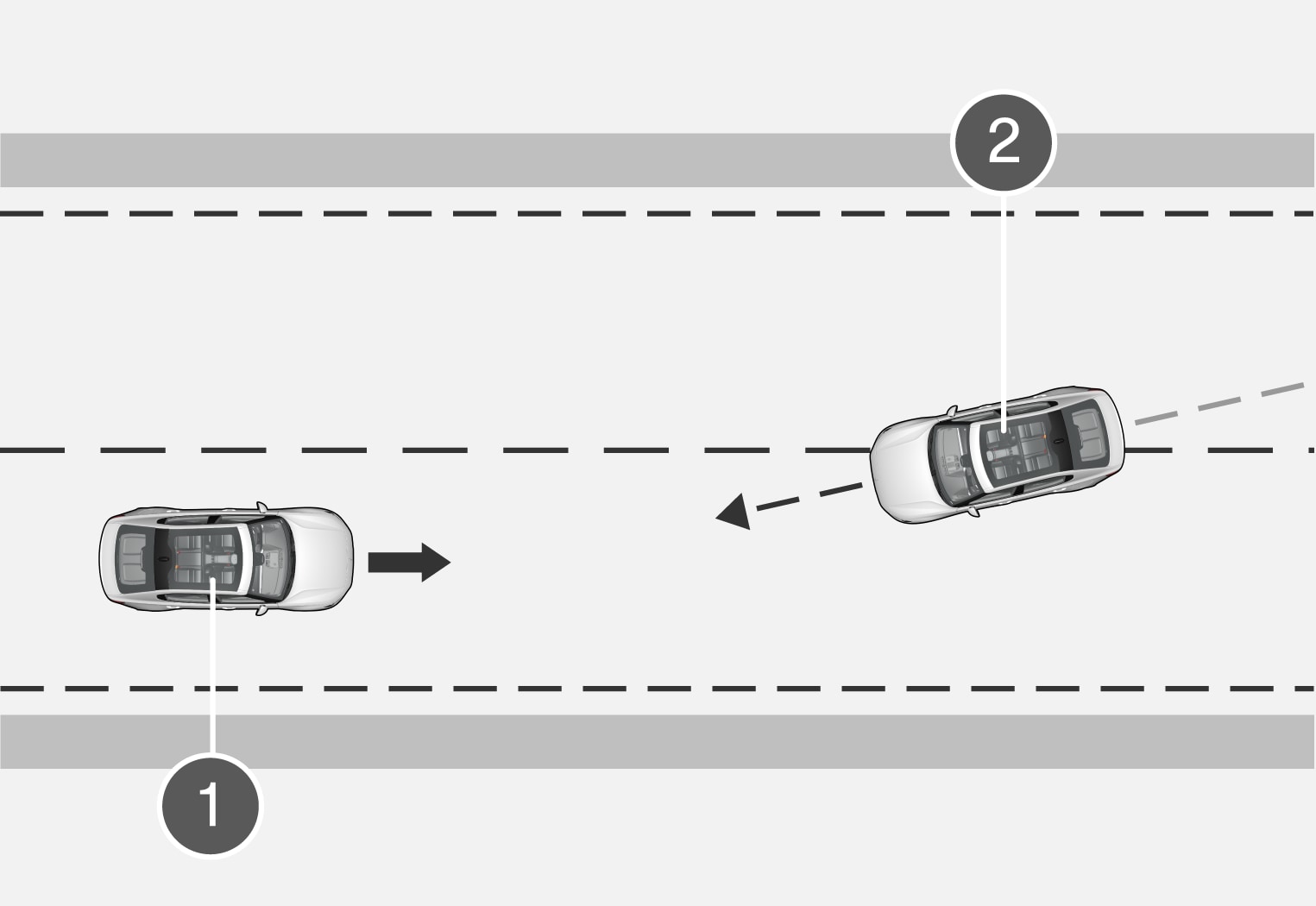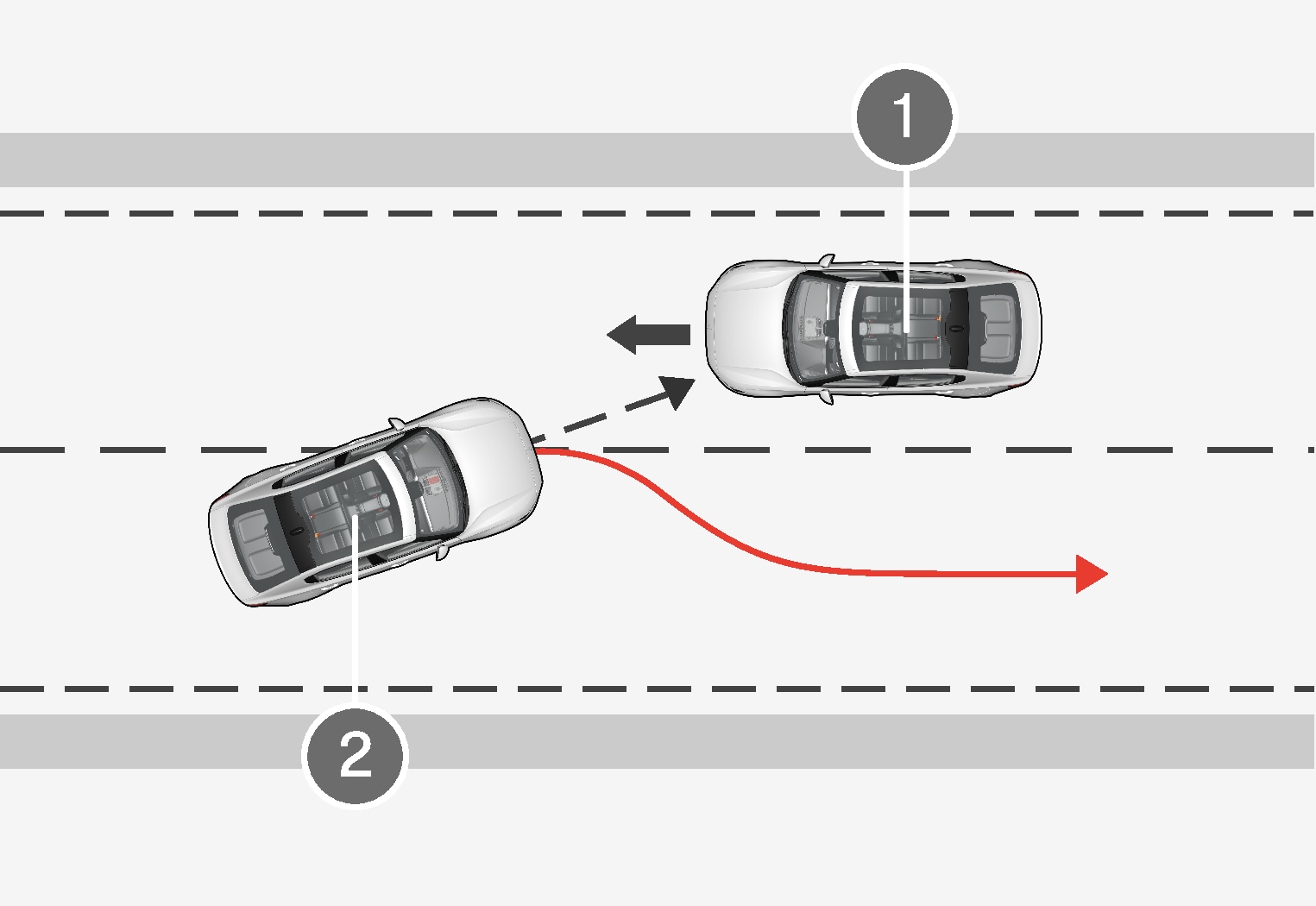Assistance during collision risks in oncoming traffic
Oncoming vehicles in your own lane
If an oncoming vehicle veers into your lane and a collision is unavoidable, the function can help reduce your vehicle's speed to attempt to mitigate the force of the collision.

 Own vehicle
Own vehicle Oncoming vehicles
Oncoming vehicles
- your vehicle's speed must be above 4 km/h (3 mph)
- the road must be straight
- your lane must have clear side lane markings
- your vehicle must be positioned straight in your lane
- the oncoming vehicle must be positioned within your vehicle's lane markings
- the oncoming vehicle's headlights must be on
- the function can only handle "front-to-front" collisions
- the function can only detect vehicles with four wheels.
When the vehicle veers into oncoming traffic
This function can help a distracted driver who has not noticed that the vehicle is about to veer into a traffic lane moving in the opposite direction.

 Oncoming vehicles
Oncoming vehicles Own vehicle
Own vehicle
The function is active at speeds between 60-140 km/h (37-87 mph) on roads with clearly visible traffic lane markings/lines.
If your vehicle is starting to veer from your own lane and a vehicle is approaching from the opposite direction, this function can help the driver steer the vehicle back into its own lane.
However, the function will not provide steering assistance if the turn signal is used. The function will also not be activated if it detects that the driver is actively operating the vehicle.